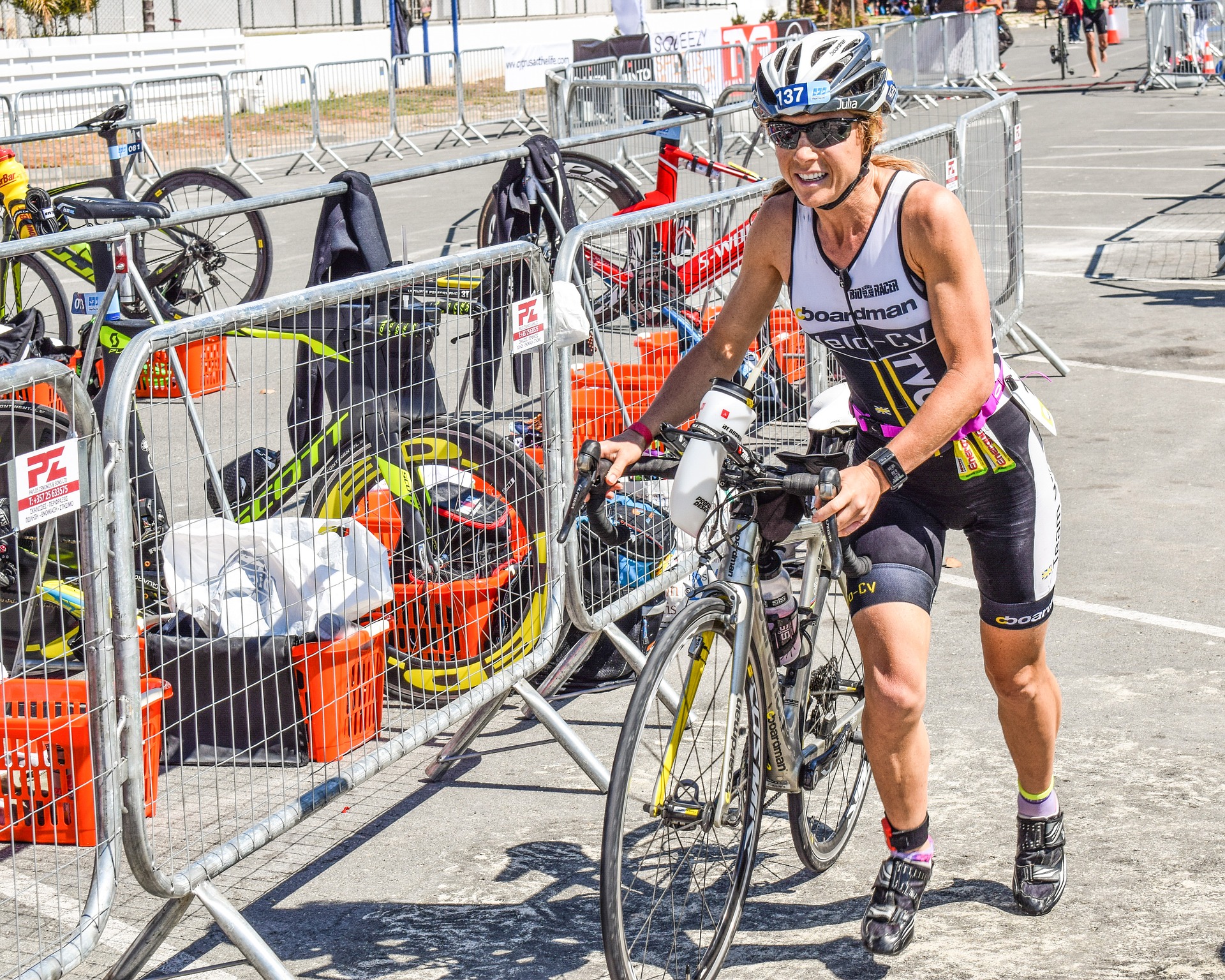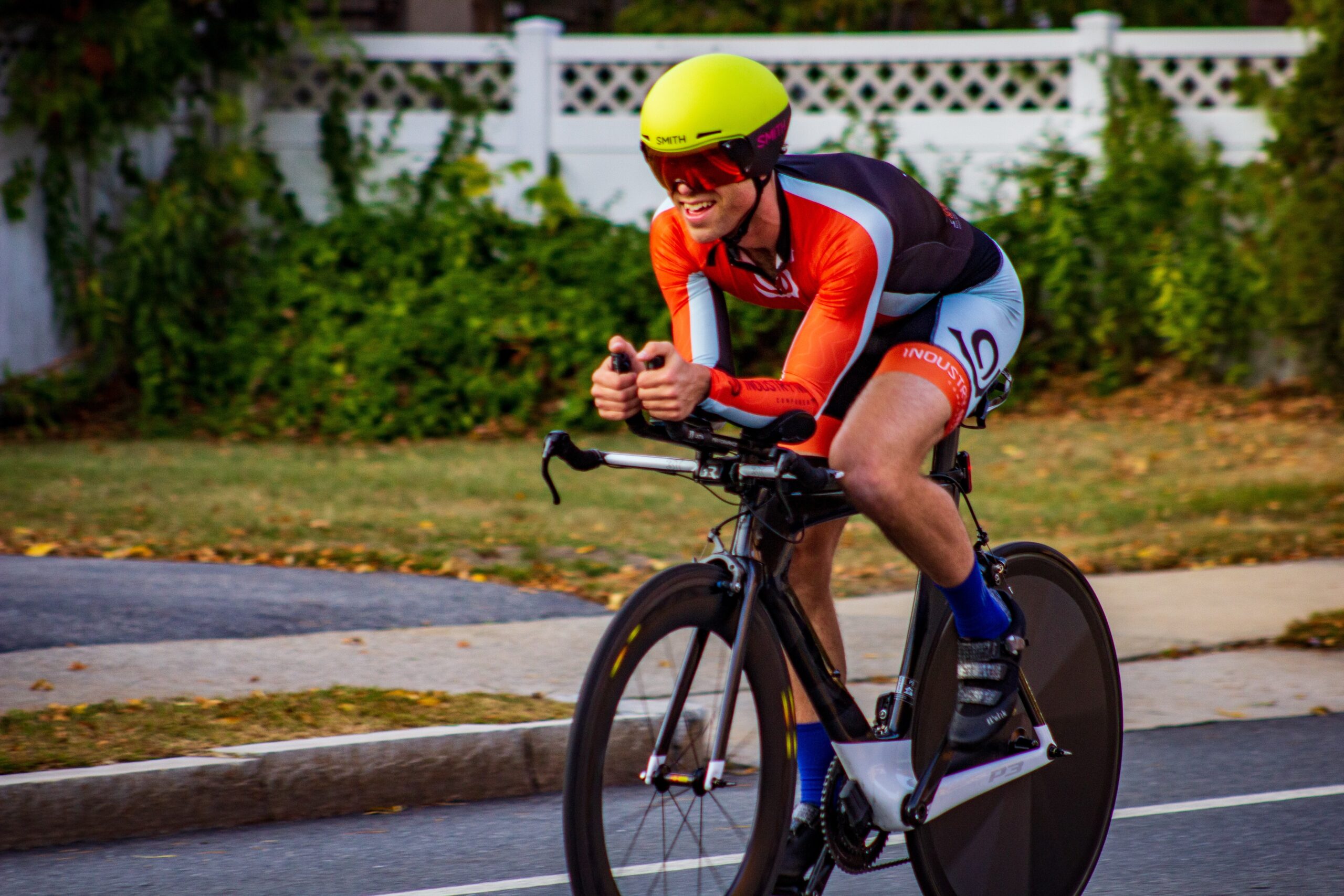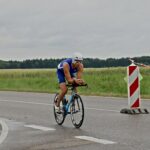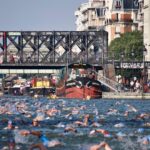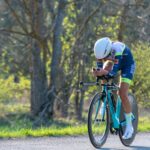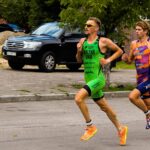One of the great emotional obstacles you will experience as a triathlete involves what I call the negative emotional chain. The negative emotional chain includes a linked series of unpleasant and interfering emotions you experience as you face the inevitable challenges of developing as a triathlete and making often-times unsteady progress toward your goals. The three emotions that comprise the negative emotional chain are frustration, anger, and despair.
Link #1: Frustration
Frustration may be your most significant roadblock to achieving your triathlon goals. Every triathlete, from juniors to age-groupers to Olympians and pros, has experienced the feeling of frustration when they’re not able to do something, whether physically, technically, tactically, or competitively: you feel stuck, get tense, lose focus, and get discouraged. The best way I can describe the feeling is: AAARRGGHH!! It is a truly infuriating feeling!!!
But what is frustration precisely and what causes it? Simply put, frustration arises when the path toward your goal is blocked, whether the goal is holding a power zone during bike intervals, struggling to improve your swim technique, setting a new PR in the bike leg of an Olympic-distance triathlon, or qualifying for the USAT Age-group National Championships. Frustration is an emotion that you probably experience frequently. And it can be really disheartening and, well, frustrating.

Most people think of frustration as a bad emotion, but it is actually more complex than that. The fact is that frustration is hard wired into us to help us survive. Frustration starts as a good emotion because when you get frustrated, you’re motivated to remove the obstacle that is blocking the path toward your goals. You try harder and that extra effort can, if the obstacle isn’t too big, result in clearing that path enabling you to no longer feel frustration and to continue down the path toward your goals.
However, there is a problem that often arises when you become frustrated which can prevent you from clearing that path to your goals. There is a tendency when you experience frustration to do what you were doing before simply more and harder, relying on the “magical thinking” that you will somehow just wear the barrier down by sheer will and persistence (which can happen, but not usually). However, this strategy violates Albert Einstein’s famous Law of Insanity; “Doing the same thing over and over and expecting different results.” So, your well-intentioned efforts can often increase, not decrease, your frustration, thus leading you to the next link the negative emotional chain.
Link #2: Anger
If, despite your best efforts, you couldn’t clear the path toward your goals and relieve your frustration, it can morph into anger. Most people also believe that anger is a bad emotion, but, like frustration, it too has both positive and negative sides. Anger starts out as being potentially helpful because it too is motivating. When you’re angry, you want to go after the thing that is causing your anger. So, you direct all your anger-created energy toward ripping down that barrier that is blocking your path. Again, if the barrier that is blocking the path toward your goals isn’t too difficult to overcome, having your emotional volume turned up from frustration to anger, and the extra energy it produces, may just give you what you need to knock that barrier down.
Unfortunately, often, anger can turn into an emotion that hurts your performance. The feelings of anger are like those of frustration but increased exponentially. Your body becomes tense, you lose your coordination, and the quality of your efforts declines. Your focus narrows so much that you miss important cues that might otherwise help you surmount the roadblock. And your ability to think clearly becomes clouded by the anger, so you aren’t able to make good decisions about how to approach the obstacle. The likely result is that the barrier will remain in place, you continue to be unable to continue down the path toward your goals, and you will move onto the final link in the negative emotional chain.

Link #3: Despair
If you can’t clear the obstacle from your path that initiated the negative emotional chain at this point, your emotions shift to the final link of the negative emotional chain: despair. You have tried and tried and tried and still can’t remove the barrier, so the natural thing to do is to quit. You feel out of control, helpless, and hopeless. What’s the point of continuing to try if nothing you do works? The unfortunate outcome of the conclusion of the negative emotional chain is immediate and irreversible failure to make progress toward your goals that day.
When you experience despair, everything that would be required for you to ultimately overcome the initial cause of the negative emotional chain goes the other way. Psychologically, you lose your motivation, confidence, and focus. All the physical parameters related to triathlon success, including energy, blood flow, oxygen, and adrenaline, drop precipitously. The result is that you lack what it takes mentally and physically to remove the roadblock that prevented your continuing headway toward your goals.
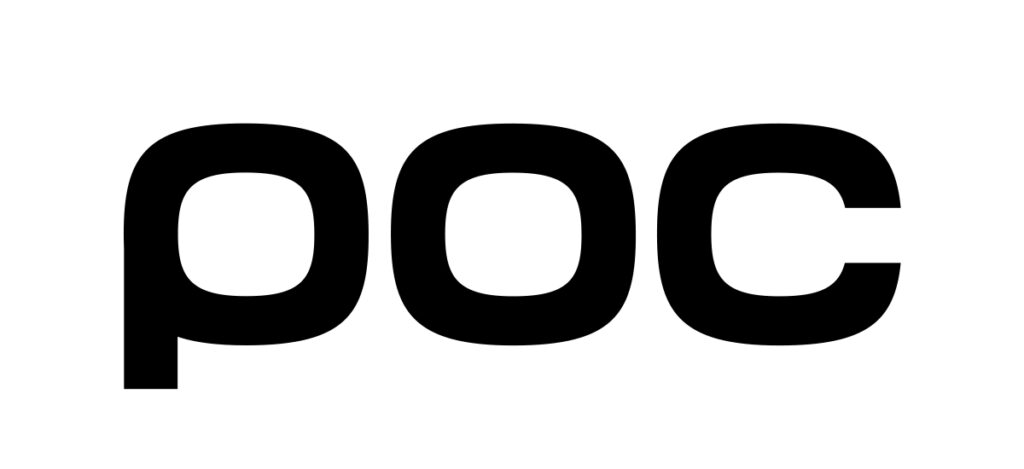
It has been my experience that if you move from frustration to anger to despair, continued efforts that day usually fail. You are, quite simply, finished for the day. And if you experience the negative emotional chain on a regular basis—sinking repeatedly into despair—you will likely lose your motivation and be unwilling to make a sustained effort in the future. With each descent down the negative emotional chain, you come to believe that you have lost control of your emotions when faced with difficulties in your triathlon, your actions have little effect, and you will progressively lose confidence in your ability to achieve your goals and any desire to continue in our sport.
Breaking the Negative Emotional Chain
Despite the powerful influence that frustration can have on your training and competitive efforts (as well as life in general), you were probably never taught how to deal with your frustration in a constructive way (it should be a required part of your triathlon training). Your goal is to learn to stop the negative emotional chain at frustration by responding positively to the frustration when it first arises. Here are several clear steps you can take.
Take a break. When frustration first arises, you should first take a break from the situation that is causing the frustration. By doing so, you create physical distance from the source of the frustration and that distance also results in emotional distance in which the frustration naturally diminishes.

As a part of taking a break, there are two more useful steps you can take. First, as I note above, frustration causes an increase in physiological intensity including muscle tension and choppy breathing. To relieve these unpleasant symptoms of frustration, you want to change your physiology by taking deep breaths and relaxing your muscles. Second, you can do something during the break that creates emotions that are the opposite of frustration, for example, listen to music, be goofy, or talk to friends. This step lessens the uncomfortable physical symptoms that accompany frustration and generates emotions, such as happiness or fun, that can counteract the feelings of frustration, thus reducing its influence on you.
Another great way to counter the feelings of frustration when you take a break from training is to do something at which you can succeed, for example, if you’re frustrated by your inability to improve your DPS (distance per stroke), shift your efforts to something else during your swim workout that you are good at, thus feeding your feelings of confidence and generating more positive emotions such as pride and hope. With these renewed good feelings, you can then return to your DPS challenge with a better attitude.
Finally, when you get frustrated, it can be helpful to have a snack or something to drink. Hunger and thirst can contribute to vulnerability to frustration because your body is in a weakened and needy state. Refueling can give you the energy you need to resist the pull of frustration and help you perform better, thus making it less likely that frustration will arise again.
Gain perspective. Having an unrealistic perspective on your training and competitive efforts can set you up for frustration even before you begin to train or compete and exacerbate your susceptibility to frustration after you’ve begun. This perspective revolves around the belief that you can reach your goals quickly and easily. Unfortunately, nothing of value in triathlon (or life) comes without significant time, effort, and energy, as well as setbacks and plateaus.
To prevent this self-fulfilling prophecy from occurring, you can use what I call the “3 Ps of Perspective:” patience, persistence, and perseverance. When you begin to experience frustration, you can remind yourself that progress takes time and that you should hang in there no matter how it goes. You can also commit to persisting for as long as it takes and persevering through the inevitable ups and downs you will experience as you pursue your triathlon goals. This long-term perspective may not remove your frustration completely, but it will lessen it, allowing you to take the additional steps to follow that can relieve your frustration completely.
You can also look at your confrontation with frustration as an opportunity to become tougher and more resilient. The reality is that the pursuit of your triathlon goals is a frustrating process because it is long and difficult with many stumbling blocks and failures. Experiencing frustration gives you a great opportunity to embrace the frustration and learn how to deal with it in a positive and constructive way. You can think about frustration as emotional adversity, just another form of adversity that, if you can overcome it, will better prepare you to surmount the many types of adversity that are part and parcel of triathlon. When you allow yourself to be exposed to it and then learn how to respond positively to it, you become a better triathlete more capable of dealing constructively with all forms of adversity in the future.
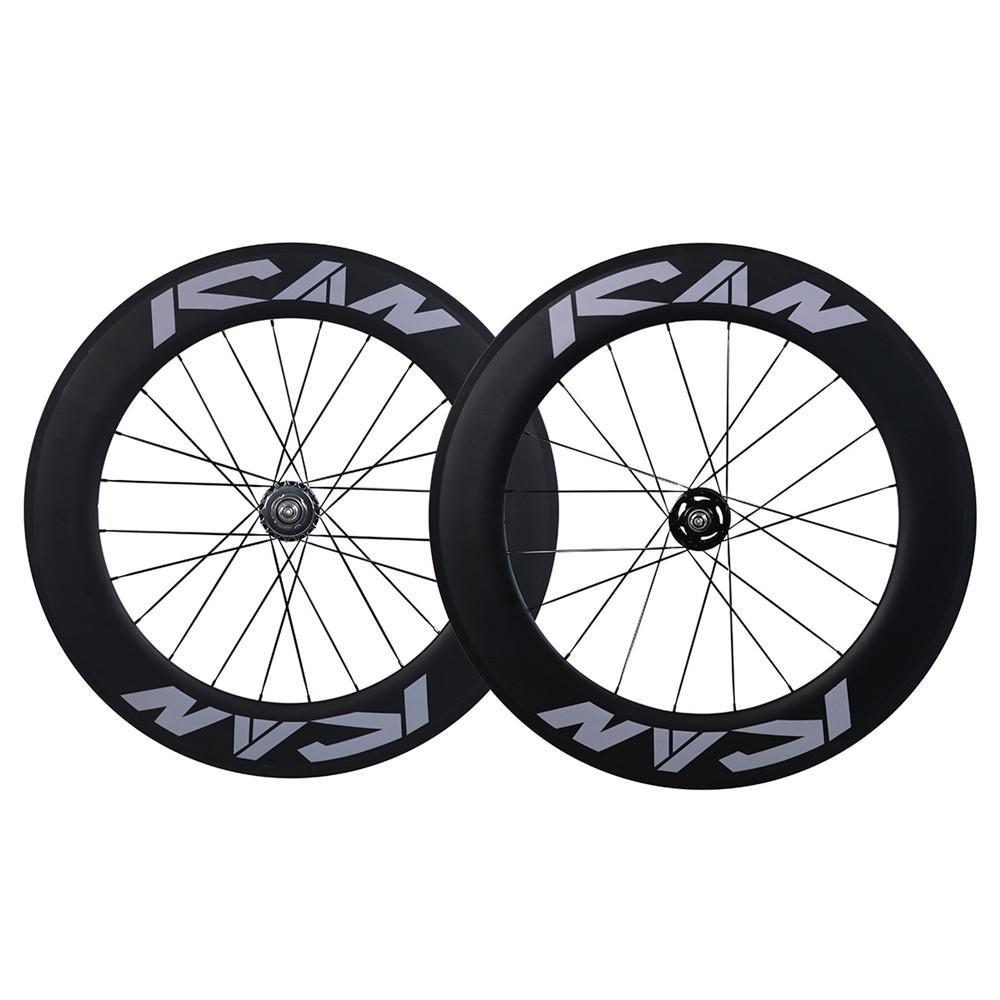
Identify the cause. At this point, you will have relieved yourself of most of the physical, psychological, and emotional expressions of frustration. But you still aren’t ready to return to confront the cause of your frustration because that cause is still there and, if you reengage it now, you would simply become frustrated again.
The next step then is to identify the cause of your frustration. If you can understand the specific problem, that is, what produced your frustration, then you can find a solution and, in doing so, can remove the obstacle that originally led to your frustration.
Find a solution. With the cause identified, you are now only one step away from being able to return to the situation that was causing your frustration in the first place. Now that you know what the obstacle is, it may be physical, technical, tactical, equipment, or mental, you are now able to find a solution. Sometimes, the solution is obvious and easy to put into action (e.g., refuel when your body is depleted during a long training ride). Other times, it is too big to act on (e.g., trying to make a major change in your swim stroke). In this case, it can be useful to break down the bigger problem into smaller, more manageable problems. Also, if you can’t figure out the cause of your frustration yourself, ask your coach for help.
If all else fails. The reality is, though, that you can’t always immediately clear the obstacles to your goals, so continued efforts in pursuit of those goals on any given day would be futile and discouraging. The barriers may be just too great to surmount on that day. If you feel as if you have exhausted every resource you have to remove the barriers, you have two options. First, you can change your goals to ones that you feel capable of striving for and achieving that day. For example, you can shift your focus onto another area of your training that you believe you can make progress on.
Second, there are going to be days when you just aren’t going to make any progress toward your goals and continuing to try without success will just discourage you more and hurt your efforts in the long run. In this case, it may be wise to deliberately “give up” and choose to fight another day. If you choose this path, then go do something else that is productive, such as another part of your triathlon training program, such as conditioning, or just do something you enjoy that will take your mind off the day of frustration. I experienced this firsthand the other day when, for the second day in a row, I couldn’t meet my power numbers during a long Zwift cycling workout. Instead of beating my head against the wall and getting more frustrated and discouraged, I cut the ride short and went for a recovery run in which I relaxed and felt much better.
Do you want to take the next step in training your mind to perform your best in training and on race day? Here are five options for you:
- Read my Triathlon blog.
- Listen to my Train Your Mind for Athletic Success podcast.
- Read my latest mental training book: Train Your Mind for Athletic Success: Mental Preparation to Achieve Your Sports Goals.
- Take a look at my online mental training courses.
- Schedule a 1:1 session with me.

